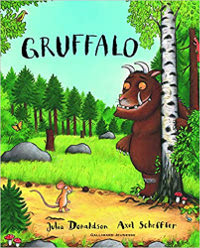For the Prolog Advanced Class Project (May 2020) I modeled a planner after The Gruffalo bedtime story by Julia Donaldson and Axel Scheffler. This project, in its final form, is a small web application that lets parents enter names of their child's favorite objects and then generates coherent, customized bedtime stories that make sense using those pets.
TBD
make testwill compile the source code, and run the unit tests.make covperforms step 1 and, in addition, will print information about coverage by file (e.g., number of clauses).make replwill compile the source code, and will start the Prolog top level (i.e., REPL). Note that you can run a unit test(s) in the top level with run_tests/1.make args ARGS="Module Goal ExtraArgs"will compile the source code, and applyModule:Goalwith theExtraArgs. For example,ARGS="starter string_uppercase 'hello'"callsstarter:string_uppercase('hello', Result). Note thatResultis an unbound variable supplied byload.pl. Its possible to supply your own unbound variables, but it requires more pattern matching than what I've coded inload.pl.
Licensed under the MIT license which can be found in the file
LICENSE in the project root.
- Use empty imports (use_module(mymodule, [])) in order to not pollute the namespace.
- Always use module prefixes (mymodule:predicate(...)) in order to clarify where things are coming from.
- Always use the "made-up" module prefix "core:" when calling built-in predicates. This is completely unnecessary, and doesn't even work in all cases, but I think it is a good idea as long as it doesn't cause any problems. This decision may need to be revised when compatibility between different Prologs is investigated.
- Avoid the if-then-else construct. It just looks ugly.
- Avoid disjunctions. They are ugly, and can be replaced by properly written helpers. Think: premises are "and", clauses are "or".
- Use cuts where appropriate, and try to keep each cut on a line by itself unless its placement is obvious and consistent in each clause. PlUnit is excellent at pointing out when tests succeed but leave choice points.
- Try to avoid spaces within lists and structures, but always use spaces between arguments.
- Predicates, atoms, etc. should use "this_naming_style" while variables should use "ThisNamingStyle".
- Try to stick to the PlDoc structure.
- If in doubt, consult: Some Coding Guidelines for Prolog
The structure of this starter template was modeled after a prolog project by khueue.
